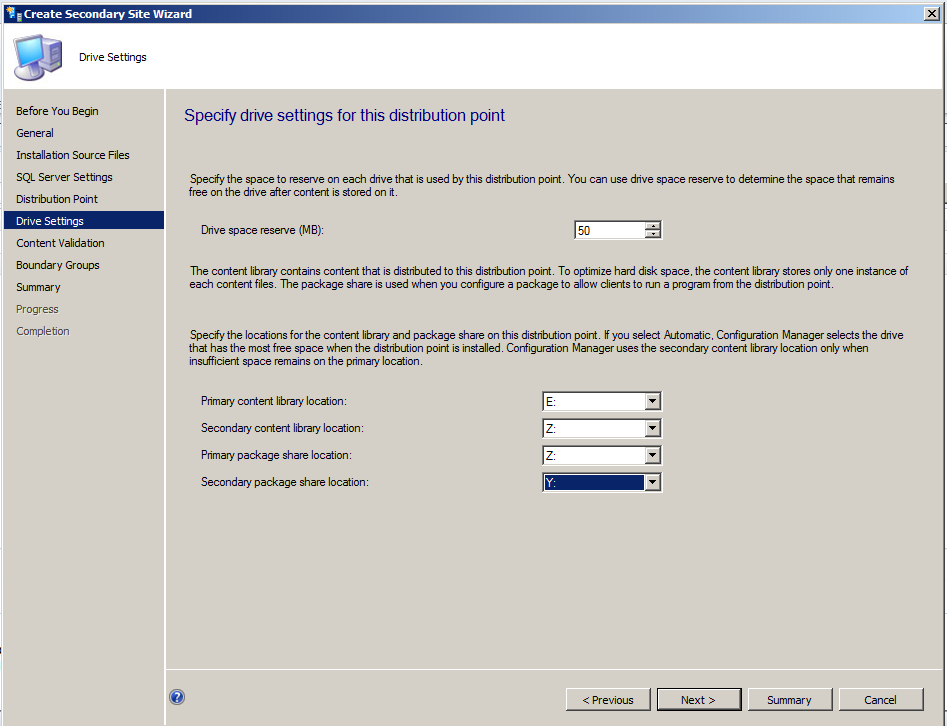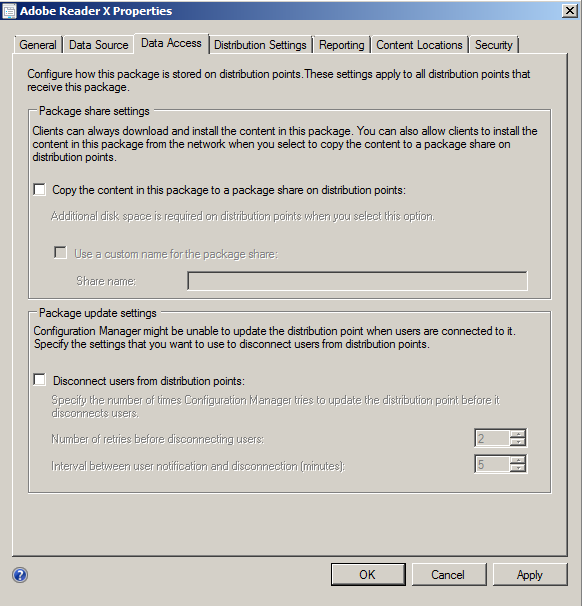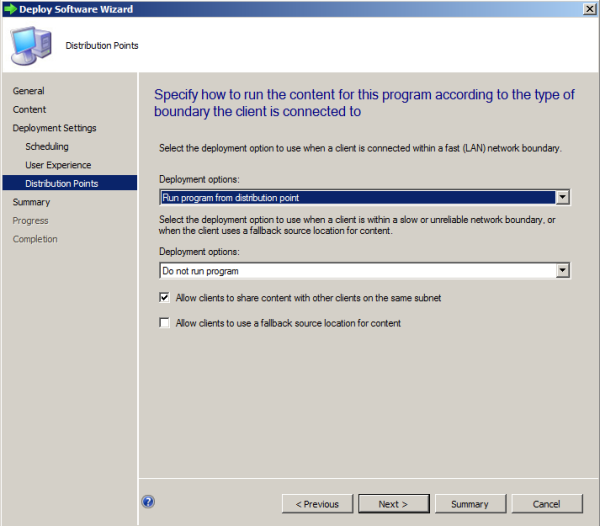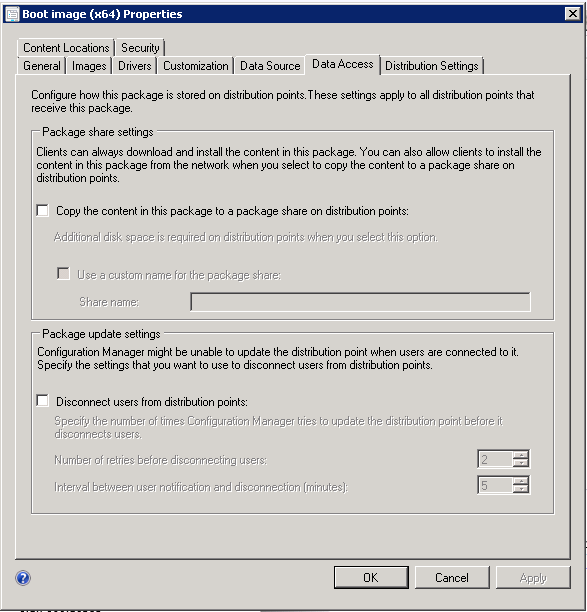System Center 2012 Configuration Manager: Understanding Content Management Storage Options
There has been many discussions/blogs about Content Management in System Center 2012 Configuration Manager, particularly the new content library and single-instance storage, but not much about the legacy package share and how it is used in 2012. The package share is still used in certain situations but it’s not clear when and where. This blog will investigate the different options available so you can plan your storage allocation with precision.
First, a quick review of a Distribution Point setup:
When setting up a System Center 2012 Configuration Manager Distribution Point, we come across the Drive Settings page where we can specify the drive settings for the distribution point. You can configure up to two disk drives for the content library and two disk drives for the package share, although System Center 2012 Configuration Manager can use additional drives when the first two reach the configured drive space reserve. The Drive Settings page configures the priority for the disk drives and the amount of free disk space that remains on each disk drive.
Drive space reserve (MB) : The value that you configure for this setting determines the amount of free space on a drive before System Center 2012 Configuration Manager chooses a different drive and continues the copy process to that drive. Content files can span multiple drives.
Content Locations: Specify the content locations for the content library and package share. System Center 2012 Configuration Manager copies content to the primary content location until the amount of free space reaches the value specified for Drive space reserve (MB) . By default, the content locations are set to Automatic. The primary content location is set to the disk drive that has the most disk space at installation, and the secondary location is assigned to the disk drive that has the second most free disk space. When the primary and secondary drives reach the drive space reserve, Configuration Manager selects another available drive with the most free disk space and continues the copy process.
Of course you can still prevent Configuration Manager from installing on a specific drive; create an empty file named no_sms_on_drive.sms and copy it to the root folder of the drive before you install the distribution
point.
The content library is the main storage location for Configuration Manager. It stores all content files for software updates, applications, operating system deployment, and so on. The content library is located on the site server and on each distribution point, and it provides a single instance store for content files. Before Configuration Manager downloads content files to the site server and copies the files to distribution points, Configuration Manager verifies whether each content file is already in the content library. If the content file is available, Configuration Manager does not copy the file to the distribution point, but instead associates the existing content file with the application or package.
The package share is a legacy storage location from CM2007, but still supported in 2012. It keeps the same name (SMSPKGx$), but sits empty on site servers and distribution points until the deploy option to run programs from the DP is specified (instead of download and run locally) or you select the Package share settings to copy the content as shown below.
In the package properties, under the Data Access tab, there is an option to Copy the content in this package to a package share on distribution points.
This option is automatically selected if the Deploy option to Run program from the Distribution Point is selected.
It's also on OSD objects, such as OS Images & Boot Images:
So if you check the box to copy content to the package share (or run from DP), then storage could potentially increase because you will have both the package share files and the content library files! Note that this only applies to Application Packages & OSD items and not to new Applications or Software Updates.
This is why we have the ability to separate the content library drives and the package share drives when setting up a Distribution Point. Some companies might have a need for the legacy packages and run them from a DP or just want original source files available on the DP. Having the ability to determine location helps in planning for your storage allocation needs!



